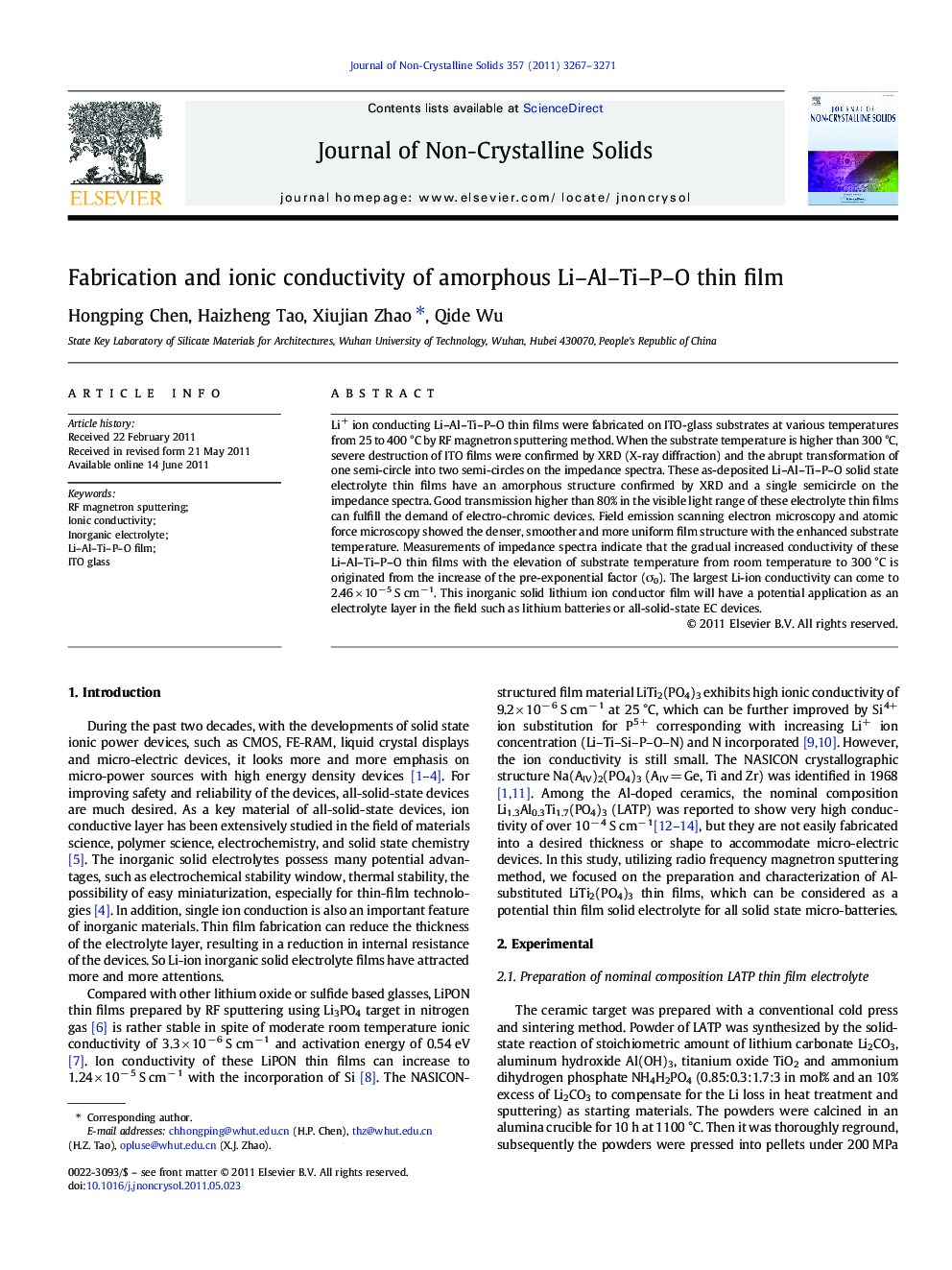| Article ID | Journal | Published Year | Pages | File Type |
|---|---|---|---|---|
| 1482542 | Journal of Non-Crystalline Solids | 2011 | 5 Pages |
Li+ ion conducting Li–Al–Ti–P–O thin films were fabricated on ITO-glass substrates at various temperatures from 25 to 400 °C by RF magnetron sputtering method. When the substrate temperature is higher than 300 °C, severe destruction of ITO films were confirmed by XRD (X-ray diffraction) and the abrupt transformation of one semi-circle into two semi-circles on the impedance spectra. These as-deposited Li–Al–Ti–P–O solid state electrolyte thin films have an amorphous structure confirmed by XRD and a single semicircle on the impedance spectra. Good transmission higher than 80% in the visible light range of these electrolyte thin films can fulfill the demand of electro-chromic devices. Field emission scanning electron microscopy and atomic force microscopy showed the denser, smoother and more uniform film structure with the enhanced substrate temperature. Measurements of impedance spectra indicate that the gradual increased conductivity of these Li–Al–Ti–P–O thin films with the elevation of substrate temperature from room temperature to 300 °C is originated from the increase of the pre-exponential factor (σ0). The largest Li-ion conductivity can come to 2.46 × 10− 5 S cm− 1. This inorganic solid lithium ion conductor film will have a potential application as an electrolyte layer in the field such as lithium batteries or all-solid-state EC devices.
Research highlights► Li+ ion conducting Li–Al–Ti–P–O films on ITO glass substrate by magnetron sputtering. ► Film becomes denser, smoother and conductivity increases with substrate temperature. ► Largest conductivity of 2.46×10–5 S·cm–1 obtained at substrate temperature of 300 °C. ► Further increase in substrate temperature leads to lowering conductivity of ITO glass.
